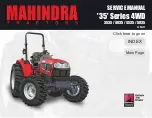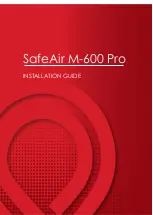
24 (32)
.
Planning and efficient use of the digging equipment
Digging work is always started with thorough inspection of the site and planning the work in advance. Things
to consider include at least the following:
Inclinations and loader capabilities
Digging movements and reach of the equipment
Where to dump or transport soil
Need to enter the excavation or trench and protection from cave-ins
Maintaining the stability of the loader at all times
Possible hazards exposed during excavation
Basic excavating technique:
Maximum digging force is achieved by combining the hydraulic power of the boom, dipper and bucket.
Digging with the backhoe is the most efficient when the edge of the bucket is kept at an angle that
allows the edge to cut the soil the most effectively.
Operate both control levers simultaneously to use all three functions at once
Let the bucket teeth and cutting edge work for you. The teeth do the initial cutting by breaking the soil into
pieces. The crumbling spoil begins to fill the bucket and the curling action holds the spoil in the bucket.
1
Penetrate into the ground with the
bucket
Depending on soil material, the most
efficient angle varies.
In average digging conditions,
start with the bucket at about a
45° angle to the ground.
When digging hard ground, it
may be necessary to decrease
the bucket angle of entry to the
point where the back of the
bucket almost contacts the
ground. It may also be
necessary to apply downward
pressure with the boom on the
bucket.
For a clean excavation, make the first cut carefully, as it determines the position and direction of
subsequent digging.









































